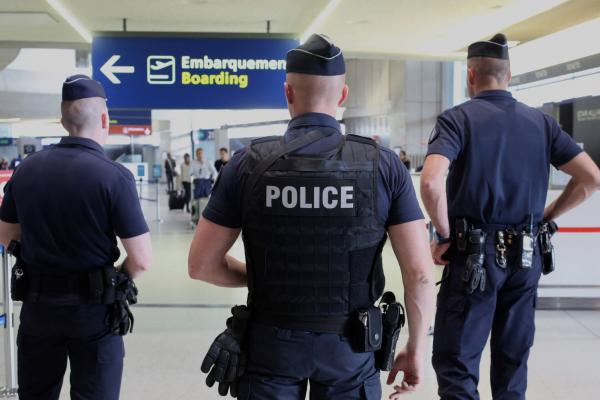
CAIRO, May 20 (UPI) — Data transmitted by EgyptAir Flight MS804 suggests that some kind of fire started aboard the missing jetliner before it dropped from radar screens, authorities said Friday.
AvHerald.com first reported Friday that the data shows smoke was detected in a bathroom near the cockpit. NBC News reported that it had confirmed the system alerts.
The Aircraft Communications Addressing and Reporting (ACARS) system automatically sent several messages concerning the alarm, as investigators try to determine what happened on the plane before it disappeared.
Earlier Friday, investigators said they had located plane wreckage and human remains from the flight in the Mediterranean Sea.
Parts of the plane were found in the water about 180 miles north of Alexandria, Egypt, the Egyptian military said. Both Egyptian Gen. Mohammed Samir and Greek Defense Minister Panos Kammenos said two airline passenger seats, items of luggage and a body part were found.
While Samir said there is “no doubt” this debris belongs to MS804, Kammenos cautioned official confirmation has not yet been made. The airline had to retract information Thursday after announcing wreckage from the plane had been found, only to later learn it didn’t come from the Airbus 320.
Flight MS804, traveling from Paris to Cairo with 66 people on board, is believed to have crashed into the sea as it entered Egyptian airspace early Thursday. The search for the plane has centered on the area of the Mediterranean Sea between the Greek island of Crete and the Egyptian coast. The plane’s flight recorder, or black box, has not been recovered.
“Egyptian aircraft and navy vessels have found personal belongings of passengers and parts of the wreckage 290 kilometers [180 miles] north of Alexandria,” a spokesman for the Egyptian military said.
Though no deaths have been confirmed from the crash, a statement from President Abdel Fattah al-Sisi said, “The presidency, with utmost sadness and regret, mourns the victims on aboard the EgyptAir flight who were killed after the plane crashed in the Mediterranean.”
The European Space Agency said Friday a satellite detected what could be an oil slick from the plane on the surface of the eastern Mediterranean Sea. The area coincides with the search area where the plane is believed to have disappeared.
The U.S. Navy joined the search Thursday afternoon, and a plane from its Sicily air base spotted several floating objects, including luggage and what is believed to be a passenger seat, a Greek rescue official told ABC News.
A potential issue in the investigation is the United States’ level of involvement in the search for the plane and the investigation into the cause of the crash. After an EgyptAir flight crashed off the coast of Massachusetts in 1999, killing 217 people, the joint investigation by Egypt and the United States was marked by distrust and a lack of cooperation.
The U.S. National Transportation Safety Board concluded first officer Gameel al-Batouti was to blame for the crash, while Egypt’s Civil Aviation Authority, noting a perceived lack of cultural sensitivity on the part of the NTSB, blamed mechanical failure and exonerated al-Batouti.
The search Friday followed a day of conflicting statements by officials. Debris found floating in the water Thursday was initially identified as parts of the plane by EgyptAir Vice Chairman Ahmed Adel, until he retracted his comments hours later.
Egyptian officials hinted terrorism may have been a factor in the incident. Civil Aviation Minister Sherif Fahty said the possibility “of having a terror attack is higher than having a technical” failure, but U.S. officials noted no indications of an explosion were observed by government satellites.
The plane carried 56 passengers, two pilots, five cabin crew members and three security personnel. There were 30 Egyptians on board, as well as 15 from France, two from Iraq, and one each from Britain, Belgium, Kuwait, Saudi Arabia, Sudan, Chad, Portugal, Algeria and Canada. U.S. officials confirmed there were no Americans aboard the plane.
The plane left Charles de Gaulle airport in Paris at 11:09 p.m. Wednesday night, and last had contact with Greek air traffic control personnel at 2:48 a.m. Thursday. A futile attempt to contact the plane occurred at 3:27 a.m., and 12 minutes later the plane disappeared from radar screens as it left Greek airspace and entered Egyptian airspace
Kammenos said the plane made “sudden swerves” as it descended, but the Egyptian military said it received no distress signals from the pilot.





